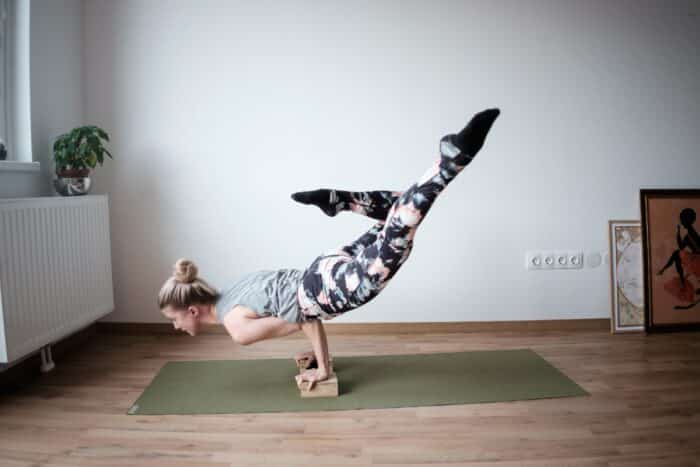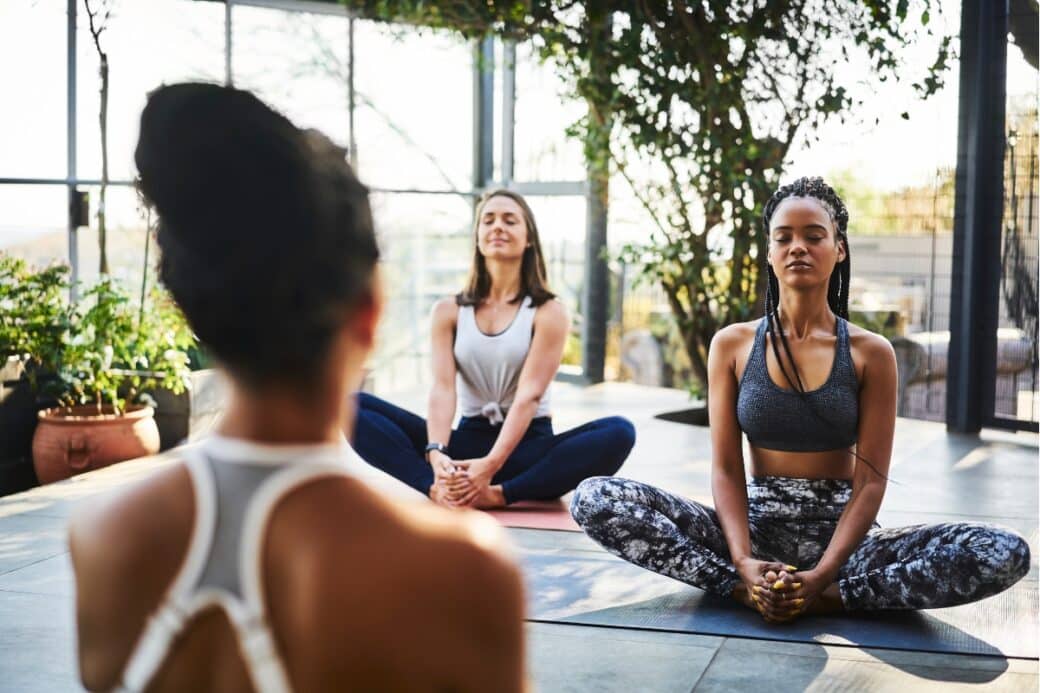Imagine finding yourself in a state of complete bliss, body and mind aligned in perfect harmony. As you close your eyes and focus on your breath, a sense of calmness and clarity washes over you. But wait, what is the name for this form of yoga? In this article, we will explore the fascinating world of the yoga of meditation and delve into the deeper meanings and insights it offers. Join us on this journey of self-discovery and unlock the secrets of the ancient practice that has captured the hearts and minds of millions.

Understanding the Concept of the Yoga of Meditation
Defining the yoga of meditation
The yoga of meditation, also known as Dhyana yoga, is a practice that focuses on calming the mind and achieving a state of deep inner peace and self-realization. It is considered one of the most important and profound paths of yoga, as it allows individuals to connect with their true selves and understand the nature of reality.
Origin and history
The origins of the yoga of meditation can be traced back to ancient India, where it was developed as a spiritual practice thousands of years ago. It is believed to have been first mentioned in the sacred scriptures, known as the Vedas. Over time, various yogic traditions and schools of thought have further developed and refined the practice of meditation.
Purpose and benefits
The primary purpose of the yoga of meditation is to attain a state of spiritual awakening and enlightenment. Through regular practice, individuals can cultivate inner peace, heightened self-awareness, and a deep connection to the divine. In addition to the spiritual benefits, meditation also offers a wide range of physical, mental, and emotional benefits, such as reduced stress, improved concentration, increased mental clarity, and enhanced overall well-being.
Basic Yogic meditation philosophy
Overview of yogic philosophy
Yogic philosophy forms the foundation of the practice of meditation. It encompasses various concepts and principles that guide yogis on their spiritual journey. Central to yogic philosophy is the belief in the interconnectedness of all things and the understanding that the true nature of reality goes beyond the physical world.
The eightfold path of yoga
The eightfold path of yoga, as outlined in Patanjali’s Yoga Sutras, provides a comprehensive framework for practicing the yoga of meditation. It consists of eight interconnected limbs, which include ethical guidelines (yamas and niyamas), physical postures (asanas), breathing techniques (pranayama), withdrawal of the senses (pratyahara), concentration (dharana), meditation (dhyana), and finally, complete absorption (samadhi).
Concept of mind-body unification
In the practice of yoga meditation, there is a strong emphasis on the unification of the mind and body. The belief is that by calming the mind through meditation and integrating the body through physical postures, harmonious balance and inner peace can be achieved. This mind-body unification is essential in order to experience the full benefits of the practice.
The practice of Dhyana: Yoga Meditation
What is Dhyana?
Dhyana is the practice of deep meditation and contemplation, which is central to the yoga of meditation. It involves focusing the mind, withdrawing it from external distractions, and directing it towards a single point of concentration. Through Dhyana, individuals can cultivate a calm and still mind, free from the incessant fluctuations of thoughts.
The principles of Dhyana
The practice of Dhyana is guided by several principles. First and foremost is the importance of finding a quiet and peaceful environment to meditate. This allows for greater concentration and minimizes external distractions. Additionally, it is essential to adopt a comfortable and stable posture, as physical discomfort can hinder the progress of meditation. Finally, the practice of Dhyana requires patience and regularity, as it is through consistent practice that the benefits of meditation can be fully realized.
Incorporating Dhyana into daily practice
Incorporating Dhyana into daily practice can greatly enhance one’s overall well-being. It is recommended to set aside a specific time and space for meditation each day. Starting with shorter durations and gradually increasing the time can help cultivate a regular practice. Additionally, integrating Dhyana with other aspects of yoga, such as asanas and pranayama, can create a more holistic and enriching experience.
Techniques in Yogic Meditation
Breathing techniques (Pranayama)
Pranayama, the practice of breath control, is an integral part of yogic meditation. By consciously regulating and manipulating the breath, individuals can influence their prana, or life force energy. Different pranayama techniques, such as deep belly breathing (diaphragmatic breathing), alternate nostril breathing (nadi shodhana), and breath retention (kumbhaka), can be used to calm the mind, balance the energy within the body, and prepare for meditation.
Meditation postures (Asanas)
While meditation can be practiced in any comfortable seated position, certain asanas are specifically designed to facilitate a deeper and more focused meditation experience. Popular meditation postures include the lotus pose (padmasana), half-lotus pose (ardha padmasana), cross-legged pose (sukhasana), and kneeling pose (vajrasana). These asanas help create stability, alignment, and comfort, enabling practitioners to sit for extended periods without discomfort.
Mindfulness in yoga meditation
Mindfulness is a key component of yogic meditation. It involves being fully present and aware of the present moment, without judgment or attachment to thoughts or sensations. Practicing mindfulness allows individuals to observe their thoughts and emotions without getting swept away by them. By cultivating this non-reactive awareness, one can develop a deeper understanding of the mind and ultimately attain a state of equanimity.

Different Types of Yoga for Meditation
Hatha Yoga
Hatha Yoga is a physical and meditative practice that focuses on balancing and harmonizing the body and mind. It combines asanas (physical postures) with pranayama (breathing techniques) to prepare the body for meditation. Hatha Yoga is often referred to as the “yoga of force” as it involves holding poses and exerting effort to bring awareness to the body and still the mind.
Kundalini Yoga
Kundalini Yoga is a dynamic and powerful form of yoga that aims to awaken the dormant spiritual energy, known as Kundalini, that resides at the base of the spine. It incorporates various elements, including asanas, pranayama, chanting, and meditation, to stimulate the flow of energy through the body and bring about a state of heightened awareness and spiritual transformation.
Nidra Yoga
Nidra Yoga, also known as yogic sleep, is a deeply relaxing and restorative practice that promotes deep relaxation and rejuvenation. It involves lying down in a comfortable position and following guided meditation instructions that lead practitioners through different stages of relaxation. Nidra Yoga is particularly beneficial for stress reduction, improving sleep quality, and accessing the subconscious mind.
Mantra Yoga
Mantra Yoga is a practice that involves the repetition of sacred sounds, words, or phrases, known as mantras, to quiet the mind and focus the attention. Mantras are believed to have a vibrational quality that can penetrate the subconscious mind and connect individuals to higher states of consciousness. By chanting mantras during meditation, practitioners can experience a deeper sense of peace, concentration, and spiritual connection.
Role of Chakras in Yoga Meditations
Understanding Chakras
Chakras are energy centers located along the spine, through which vital life force energy, or prana, flows. The subtle body consists of seven main chakras, each associated with specific physical, emotional, and spiritual aspects of our being. Understanding and working with the chakras can help individuals achieve a greater sense of balance, harmony, and well-being.
Meditation for Chakra balancing
Meditation can be a powerful tool for balancing and harmonizing the chakras. By directing the awareness to each individual chakra and visualizing it as a spinning wheel of energy, one can identify any imbalances or blockages. Through specific techniques, such as visualizations, affirmations, and color associations, individuals can restore the flow of energy and promote overall chakra health.
Role of Chakras in Yogic Wellbeing
The chakras play a crucial role in yogic wellbeing. When the chakras are in balance and the energy flows freely, individuals experience a sense of vitality, clarity, and inner peace. However, imbalances or blockages in the chakras can manifest as physical, emotional, or psychological disturbances. By working with the chakras through meditation and other yogic practices, individuals can enhance their overall well-being and facilitate personal transformation.

Benefits of Yoga Meditation
Physical benefits
The benefits of yoga meditation extend beyond the mind and can have profound effects on the physical body. Regular meditation practice has been shown to reduce stress, lower blood pressure, improve cardiovascular health, boost the immune system, and promote overall physical relaxation. Additionally, meditation can help alleviate chronic pain, enhance sleep quality, and increase energy levels.
Mental and emotional benefits
Meditation has a profound impact on mental and emotional well-being. It can reduce anxiety, depression, and other mood disorders by creating a sense of calm and reducing stress levels. Additionally, meditation enhances emotional resilience, increases self-awareness, and improves attention and focus. It also fosters a greater sense of compassion, empathy, and overall emotional balance.
Spiritual benefits
The practice of yoga meditation is deeply rooted in spirituality and can lead to profound spiritual growth and transformation. It allows individuals to connect with their inner selves, explore their true nature, and experience a sense of oneness with the universe. Additionally, meditation can deepen one’s spiritual connection, provide insights and intuition, and foster a greater sense of purpose and meaning in life.
Common Misconceptions about Yoga Meditation
Demystifying yoga meditation
Yoga meditation is often associated with misconceptions and misunderstandings. One common misconception is that meditation is only for spiritually advanced individuals or monks. In reality, anyone can practice meditation, regardless of their religious or spiritual beliefs. Another misconception is that meditation requires complete silence or the absence of thoughts. In truth, meditation is about observing thoughts without judgment and finding inner calm amidst the mental chatter.
Common myths versus facts
There are several myths surrounding yoga meditation that can deter individuals from exploring its practice. One common myth is that meditation is a religious practice tied to a specific belief system. In reality, meditation is a secular practice that can be adapted to suit individual needs and preferences. Another myth is that meditation is time-consuming and requires long hours of sitting. In fact, even a few minutes of daily meditation can yield significant benefits.
Busting the misconceptions
To truly experience the benefits of yoga meditation, it is important to dispel these misconceptions. Recognizing that meditation is a personal practice that can be tailored to individual needs and beliefs can empower individuals to explore and embrace meditation. By starting with shorter durations and gradually increasing the practice, meditation can become a regular and accessible part of daily life. Over time, the misconceptions surrounding meditation can be dispelled, allowing for a more open and fulfilling practice.
Challenges of Yoga Meditation and how to overcome them
Identifying common challenges
Meditation can present various challenges, especially for beginners. One common challenge is a restless or wandering mind, with thoughts constantly intruding on the meditation practice. Another challenge is finding the motivation and discipline to maintain a regular practice, especially when faced with time constraints or competing priorities. Physical discomfort or pain during prolonged sitting can also pose challenges for some individuals.
Practical tips to overcome difficulties
Overcoming the challenges of yoga meditation requires patience, persistence, and a compassionate approach. To calm a restless mind, techniques such as focusing on the breath or using mantras can be helpful. Establishing a consistent daily routine and creating a dedicated meditation space can help maintain motivation and discipline. Physical discomfort can be addressed by experimenting with different meditation postures and using props such as cushions or blankets for added support.
Importance of persistence and consistency
Consistency is key when it comes to the practice of meditation. It is important to approach meditation with patience and the understanding that progress may be gradual. Through regular practice, the mind becomes more familiar with the process, and meditation becomes easier and more rewarding. It is also important to cultivate self-compassion and let go of any expectations or judgments, embracing meditation as a lifelong journey of self-discovery and growth.
Resources for Practicing Yoga Meditation
Books and Online sources
There are numerous resources available to support individuals in their practice of yoga meditation. Books such as “The Miracle of Mindfulness” by Thich Nhat Hanh, “The Power of Now” by Eckhart Tolle, and “The Science of Yoga” by William J. Broad offer insightful guidance and practical techniques for meditation. Online platforms such as Insight Timer, Headspace, and Calm provide guided meditations, mindfulness courses, and a wealth of information on various meditation techniques.
Community and Classes
Joining a meditation community or attending meditation classes can provide invaluable support and guidance. Local yoga studios, meditation centers, and spiritual organizations often offer group meditation sessions and workshops. Engaging with like-minded individuals and experienced teachers can deepen one’s understanding of meditation and provide a supportive community for growth and exploration.
Guided Meditation and Apps
Guided meditation can be a helpful tool, especially for beginners. There are numerous guided meditation resources available online, ranging from recorded audio tracks to smartphone apps. Insight Timer, Headspace, and Calm offer a wide variety of guided meditations for different purposes and durations. These resources can assist individuals in establishing a regular meditation practice and provide support and guidance along the way.
In conclusion, the yoga of meditation, also known as Dhyana yoga, is a transformative practice that offers numerous physical, mental, emotional, and spiritual benefits. It is rooted in ancient yogic philosophy and guided by principles such as mindfulness, breath control, and mind-body unification. Despite common misconceptions and challenges, with persistence, consistency, and the support of available resources, anyone can embark on the journey of yoga meditation and experience its profound effects on their well-being.




